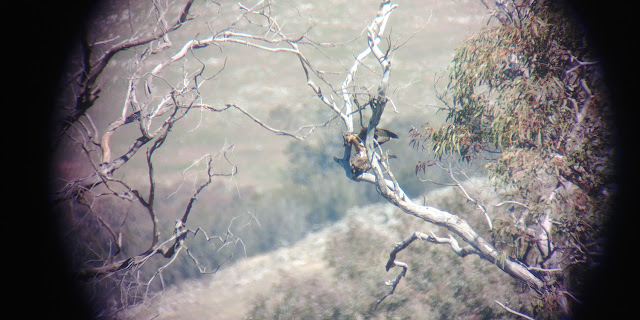Fledging time
It is now mid-December, the main fledging period for Little Eagle chicks in the Canberra area. The birds are about 8 weeks old and spend much of their final days at the nest perched on nearby branches. This bird has cast almost all of its downy chick feathers. Now its wings are dark with near fully developed flight feathers. Even its head has lost its down, one of the last parts to do so, and the distinctive crest of a full grown Little Eagle fluffs up in the wind.
The chick, the bird on the right, is smaller than the adult female behind it, so it is probably a male and they are likely to fledge a few days earlier than larger female chicks. The tuft of under-down showing on its breast is where its crop is bulging and opening the feathers. This is quite normal and can even be seen in adult birds when they have gorged on a large meal. So this is a good sign that the bird has had ample to eat.























